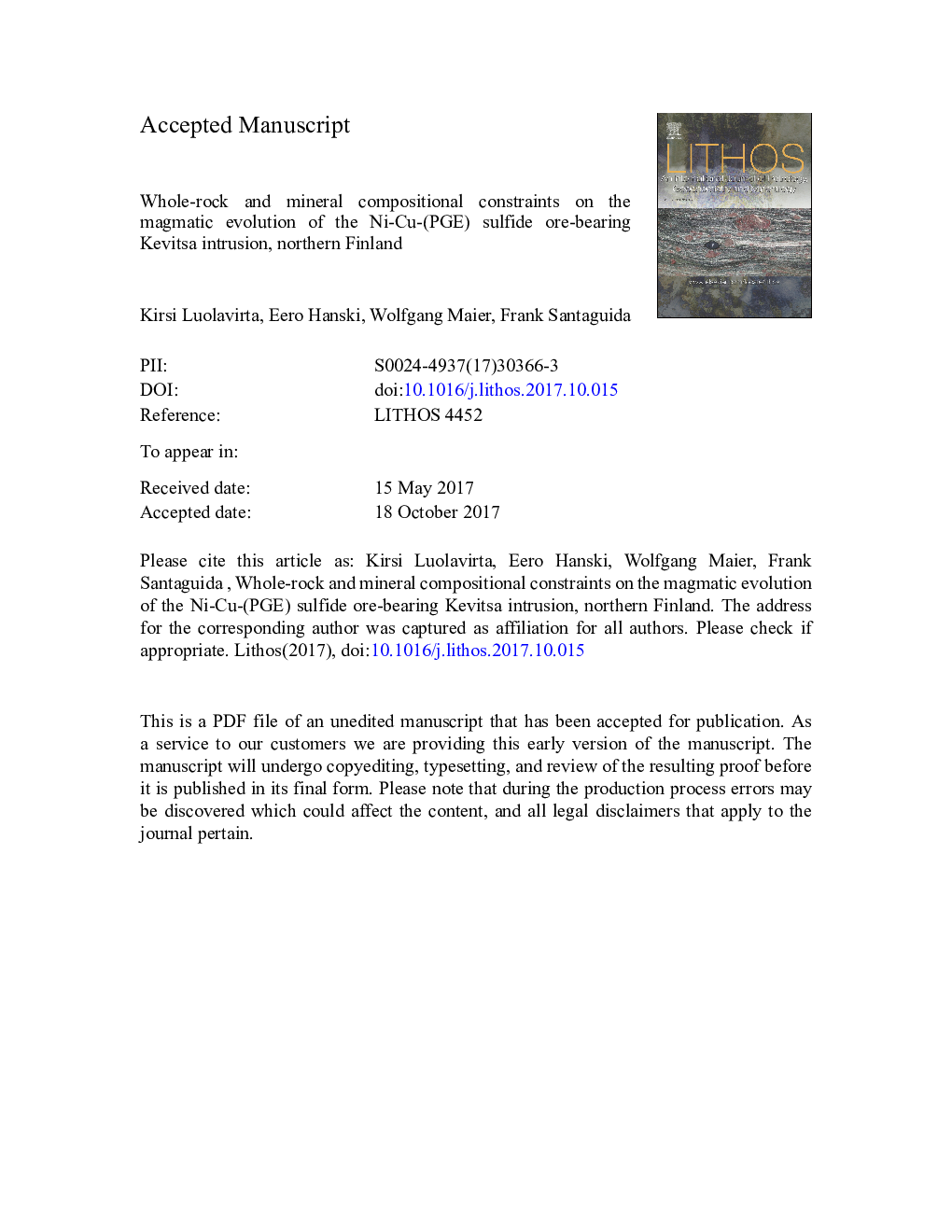| Article ID | Journal | Published Year | Pages | File Type |
|---|---|---|---|---|
| 8911785 | Lithos | 2018 | 65 Pages |
Abstract
The contrasting intrusive stratigraphy in the different parts of the intrusion likely reflects different emplacement histories. It is proposed that the Kevitsa magma chamber was initially filled by stable continuous flow (“single” input) of basaltic magma followed by differentiation in an at least nearly closed system. In the following stage, new magma pulses were repeatedly emplaced into the interior of the intrusion in a dynamic (open) system forming the sulfide ore bodies. To gain the peculiar compositional and mineralogical characteristics of the Ni-PGE ore type, the related magma probably interacted with different country rocks en route to the Kevitsa magma chamber.
Keywords
Related Topics
Physical Sciences and Engineering
Earth and Planetary Sciences
Geochemistry and Petrology
Authors
Kirsi Luolavirta, Eero Hanski, Wolfgang Maier, Frank Santaguida,
